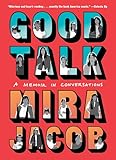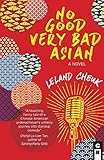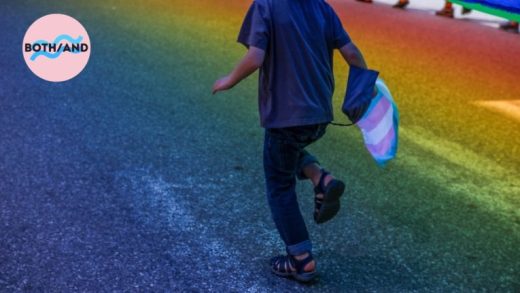Earlier this year I started writing an essay that includes references to Maman, the towering spider sculptures by Louise Bourgeois that I’d seen in Tokyo and Ottawa and that were at the time being exhibited at SFMoMA. I discovered that my Writers Grotto colleague Bridget Quinn had a chapter on Bourgeois in her book Broad Strokes so I pulled it out of my TBR. In her introduction, Quinn describes falling in love with art history as an undergraduate at U.C. Santa Barbara while having a nagging feeling that something was missing: Where were the women artists? In the massive textbook by H.W. Janson that we all used in college, the first female artist (Artemisia Gentileschi) didn’t appear until page 500, and only 16 made the cut in 800+ pages.
Broad Strokes is an engaging and necessary step toward correcting this imbalance, with 15 essays on artists ranging from famous to obscure, and from the 17th century to today. While not a focus of her book, Quinn also addresses the erasure of nonwhite artists by including chapters on Ana Mendieta, Ruth Asawa and Kara Walker. Quinn seamlessly weaves together biography, art history, memoir, and incredible storytelling, such as in the chapter on Edmonia Lewis and the rediscovery of her long-lost sculpture The Death of Cleopatra. Her writing is intimate and unstuffy, and it makes learning about important and overlooked artists feel like having a conversation with a smart, badass friend.
I went to AWP for the first time this year and it was exciting, enriching and… so overwhelming. It’s essentially two months’ worth of readings and socializing (and book shopping!) packed into three days. One of highlights was the chance to reconnect with Grace Talusan and to pick up her utterly incredible memoir-in-essays The Body Papers.
Like AWP, The Body Papers fits a lot into a small space, but the result is much more satisfying. Talusan takes us on a journey from her suburban childhood as the daughter of Filipino immigrants to the trials of adulthood as a wife, breast cancer survivor, and Fulbright scholar in the country of her birth. She writes humorously about family vacations in her parents’ battered green car, and how the love of a dog transformed her father’s attitude toward animals. But the dark beating heart of the memoir is her resilience in response to bodily trauma: her childhood abuse by a family member, and her decision to have a double mastectomy because of a genetic predisposition to cancer. Talusan’s writing is unflinchingly honest and demonstrates the healing power of telling one’s truth.

 I don’t read that many novels (compared to how many I buy… cough cough) because I need generous stretches of time to immerse myself. So I mostly read them when I travel long distances. This summer we took a trip to Norway and I brought along Rachel Khong’s Goodbye, Vitamin and Devi S. Laskar’s The Atlas of Reds and Blues.
I don’t read that many novels (compared to how many I buy… cough cough) because I need generous stretches of time to immerse myself. So I mostly read them when I travel long distances. This summer we took a trip to Norway and I brought along Rachel Khong’s Goodbye, Vitamin and Devi S. Laskar’s The Atlas of Reds and Blues.
Ruth, the quirky heroine of Goodbye, Vitamin, moves back home with her parents after a shattering breakup and witnesses the strain that dementia is putting on their marriage and home life. Seeing her father’s depression after he is forced to take a leave of absence from his university teaching job, she participates in an elaborate ruse to stage a series of classes with fake students to allow her father to regain a sense of normalcy and purpose. I was immediately drawn to this book because I could relate to the premise: My mom (also a professor) was diagnosed with Alzheimer’s many years ago and it was wrenching to see how her illness tested my parents’ long and mostly harmonious marriage.
Ruth is an appealing narrator who perfectly captures the awkwardness of being an unmarried 30-something daughter who’s living at home and hasn’t yet found her direction in life. What Goodbye, Vitamin gets right is the fascinating triangulation between Ruth, her father and his students; for the first time she is privy to the intimacy of the bonds between them, both admirable (his trusted teaching assistant) and illicit (a female grad student). She uncovers troubling evidence of betrayal while contending with his mood swings and irrational behavior, but ultimately summons deep compassion for a parent in decline. Khong offers a riveting, generous portrait of a family in crisis.
 The Atlas of Reds and Blues starts with a close-up of a woman, identified only as “Mother,” bleeding from a gunshot wound in her driveway while her home is raided by police for unclear reasons. In this cinematic opening, the reader is suspended in this long moment as Mother stares at the sky and asks herself: How did I get here? Laskar’s slender novel punches above its weight, delivering a searing indictment of American racism in short, lyrical vignettes that are devastating in their collective impact. I’m reminded of Claudia Rankine’s Citizen in the way each remembered micro-aggression accretes into a smoldering undercurrent of rage. Laskar’s book was recently recognized as one of 2019’s “Books All Georgians Should Read.” What a difference it would make if all Americans could imagine what it’s like to be a woman of color.
The Atlas of Reds and Blues starts with a close-up of a woman, identified only as “Mother,” bleeding from a gunshot wound in her driveway while her home is raided by police for unclear reasons. In this cinematic opening, the reader is suspended in this long moment as Mother stares at the sky and asks herself: How did I get here? Laskar’s slender novel punches above its weight, delivering a searing indictment of American racism in short, lyrical vignettes that are devastating in their collective impact. I’m reminded of Claudia Rankine’s Citizen in the way each remembered micro-aggression accretes into a smoldering undercurrent of rage. Laskar’s book was recently recognized as one of 2019’s “Books All Georgians Should Read.” What a difference it would make if all Americans could imagine what it’s like to be a woman of color.
 Mira Jacob’s terrific graphic memoir Good Talk touches on some of the same themes but in a completely different, unique way. I first fell in love with Jacob’s writing when I read her viral Buzzfeed piece about her son’s obsession with Michael Jackson. I had never seen anything like it: It was hilarious and heartbreaking at the same time, and brutally honest about what it means to grow up brown in America.
Mira Jacob’s terrific graphic memoir Good Talk touches on some of the same themes but in a completely different, unique way. I first fell in love with Jacob’s writing when I read her viral Buzzfeed piece about her son’s obsession with Michael Jackson. I had never seen anything like it: It was hilarious and heartbreaking at the same time, and brutally honest about what it means to grow up brown in America.
Good Talk moves back in forth in time, from Jacob’s awkward childhood to early romantic relationships to motherhood and her development as a writer in post-9/11 New York. Told mostly in dialogue, the book tackles serious issues with grace and humor. The most impactful moments are when Jacob catches herself trying to downplay the racism she encounters when she least expects it—at a party hosted by her in-laws, or in her correspondence with an NPR station during her first book tour. She doesn’t shy away from loss either—I cried reading about her attempts to buy weed to ease her father’s pain during his cancer treatment. Through it all, her son Z steals the show with his constant chorus of “why?” Although she refuses to sugarcoat the realities of the Trump era, she wants to instill in him a sense of hope that with our hearts in the right place, we can find a way forward.
 Peg Alford Pursell’s A Girl Goes into the Forest is unlike anything I’ve read before. While a few of the stories are longer, the majority are flash and micro fiction, in some cases a single paragraph. Pursell is a master at building layered, complex characters and distinctive moods in a compact space. A motif that is repeated throughout the collection is mothers and daughters that are trapped and trying to break free, literally or figuratively. For example, in “The Magician’s Assistant,” a girl feels the heat of her mother’s submerged anger and resentment towards her father, and imagines a way to make herself disappear. The writing is precise yet enigmatic; it feels like looking at family snapshots in a stranger’s photo album. We see a series of moments in time, and can only imagine the drama that takes place off the page.
Peg Alford Pursell’s A Girl Goes into the Forest is unlike anything I’ve read before. While a few of the stories are longer, the majority are flash and micro fiction, in some cases a single paragraph. Pursell is a master at building layered, complex characters and distinctive moods in a compact space. A motif that is repeated throughout the collection is mothers and daughters that are trapped and trying to break free, literally or figuratively. For example, in “The Magician’s Assistant,” a girl feels the heat of her mother’s submerged anger and resentment towards her father, and imagines a way to make herself disappear. The writing is precise yet enigmatic; it feels like looking at family snapshots in a stranger’s photo album. We see a series of moments in time, and can only imagine the drama that takes place off the page.
Later in the year, a different art exhibit led me to a book. At the De Young Museum I stumbled upon in Pursuit of Venus [infected] by Lisa Reihana, a stunning, monumental video installation that shows scenes of life in the Pacific Islands before and after the arrival of Captain James Cook in the 18th century. It begins with what you’d expect: palm-fringed vistas, women with flowers in their hair and tranquil domestic tableaus. With the arrival of ships and colonizers, the vignettes become more tense and confrontational, ultimately ending in violence. Afterward I reflected on how little I knew about this history and the ramifications of colonization that are still felt throughout the Pacific Islands today. So I went home and reached for my copy of The Charm Buyers by Lillian Howan.

 Set in Tahiti in the 1990s during the last years of French nuclear testing, The Charm Buyers follows the adventures of Marc, the son of Hakka pearl cultivators who is unmoored when his childhood sweetheart goes abroad to study in France. He drifts from one moneymaking scheme to another, and begins a relationship with a beautiful older French woman that is passionate but unsustainable. When his sweetheart returns years later from France with a mysterious, debilitating illness, Marc acquires a magical bead and calls on the shamanic powers of his ancestors to help ease her suffering. While this is the major arc, the novel is packed with colorful characters from all walks of life, painting a vivid portrait of a multicultural society in transition and the collision of different races, cultures and generations. Like Reihana, Howan explodes the myth of the postcard-perfect South Pacific and gives us a more nuanced and dimensional view of the islands that reckons with their colonial past.
Set in Tahiti in the 1990s during the last years of French nuclear testing, The Charm Buyers follows the adventures of Marc, the son of Hakka pearl cultivators who is unmoored when his childhood sweetheart goes abroad to study in France. He drifts from one moneymaking scheme to another, and begins a relationship with a beautiful older French woman that is passionate but unsustainable. When his sweetheart returns years later from France with a mysterious, debilitating illness, Marc acquires a magical bead and calls on the shamanic powers of his ancestors to help ease her suffering. While this is the major arc, the novel is packed with colorful characters from all walks of life, painting a vivid portrait of a multicultural society in transition and the collision of different races, cultures and generations. Like Reihana, Howan explodes the myth of the postcard-perfect South Pacific and gives us a more nuanced and dimensional view of the islands that reckons with their colonial past.
By the time this column comes out, I will have finished reading one more book: Leland Cheuk’s wonderful No Good Very Bad Asian. I’m about 50 pages into this epistolary novel about Chinese-American standup comic Sirius Lee, and so far it’s a riot.
More from A Year in Reading 2019
Do you love Year in Reading and the amazing books and arts content that The Millions produces year round? We are asking readers for support to ensure that The Millions can stay vibrant for years to come. Please click here to learn about several simple ways you can support The Millions now.
Don’t miss: A Year in Reading 2018, 2017, 2016, 2015, 2014, 2013, 2012, 2011, 2010, 2009, 2008, 2007, 2006, 2005
The post A Year in Reading: Grace Loh Prasad appeared first on The Millions.
Source : A Year in Reading: Grace Loh Prasad








